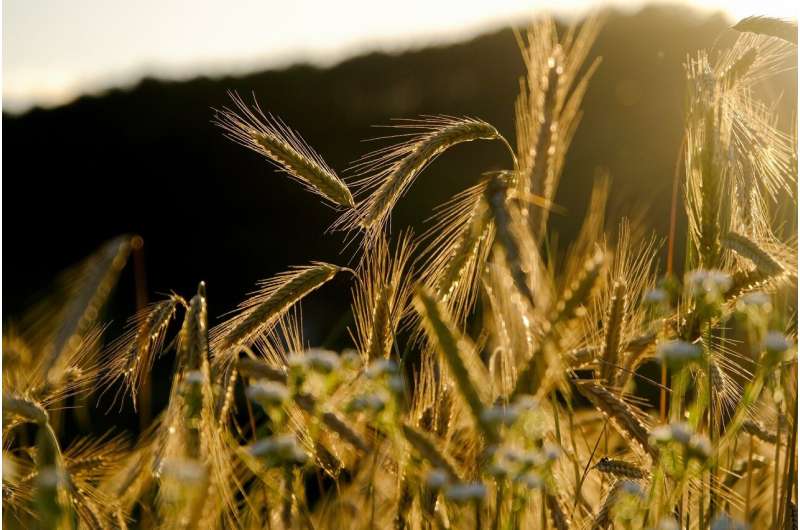This article has been reviewed according to Science X's editorial process and policies. Editors have highlighted the following attributes while ensuring the content's credibility:
fact-checked
trusted source
proofread
Starches common in processed grains can curb helpful gut bacteria

Eating cereal grains—corn, rice, wheat or one of the several others that collectively provide more than half of the world's calories—means consuming the carbohydrate known as starch. Starches consist of two primary components, amylopectin and amylose, whose ratio can influence both the properties of grains and how the human body digests them.
Early in the 20th century, researchers discovered a variant of corn containing more than 90% amylopectin and just a tiny fraction of amylose. That ratio results in so-called waxy starches that are better at thickening and stabilizing certain food products, to the point that plant breeders and food engineers often favor them.
But a lack of amylose also yields lower levels of resistant starch: the difficult-to-digest variety that can feed the vast ecosystem, or microbiome, of bacteria and other microorganisms in the gut, some of which may help combat chronic diseases. Whether and exactly how waxy starches might modify the microbiome, though, are understudied questions with few answers.
Nebraska's Andy Benson, Amanda Ramer-Tait and 11 colleagues embarked on a series of experiments to investigate those questions. In one, the researchers extracted microbiomes from the stool samples of people, then introduced them to pre-digested sorghum whose seed weight consisted of either 1% or 10–13% amylose—waxy versus non-waxy starch, respectively.
Microbiomes exposed to the waxy-starch sorghum featured less diverse microbial communities, the team found, and failed to stimulate growth of multiple bacterial species known to benefit human health. The species-deprived communities, in turn, produced 24% less of a fatty acid product that can lower risks of inflammatory bowel disease, diabetes and even neurodegenerative diseases. Those detrimental signatures emerged not only across a range of human-derived microbiomes, but also when introducing the microbiomes to waxy lines of other grains, including corn and rice.
To get a sense of whether those outcomes might hold in an actual human gut, the team turned to Nebraska U's Gnotobiotic Mouse Facility, where mice can be raised free of all bacteria and other microbes. By implanting those germ-free guts with human microbiomes and feeding the mice flour from various sorghum lines, the team was able to isolate the possible physiological influences of waxy starch.
Mice whose diets consisted of 20% waxy-starch sorghum put on noticeably more weight, despite eating the same portions as peers fed sorghum with non-waxy starch. The finding aligns with other studies in suggesting that the digestion of less-resistant starches can contribute to weight gain, specifically pointing to low amylose and high amylopectin as culprits.
The team's research has been published in the journal Gut Microbes.
The team's proof-of-concept experiments reinforce the value of considering trade-offs between plant traits bred for food functionality—including the processing benefits of waxy starches—and their potential health-related consequences. Integrating techniques that can measure starch-microbiome dynamics into the development of crop lines and food products, the team said, could help plant breeders and food scientists better balance functional properties with nutritional.
More information: Qinnan Yang et al, The waxy mutation in sorghum and other cereal grains reshapes the gut microbiome by reducing levels of multiple beneficial species, Gut Microbes (2023). DOI: 10.1080/19490976.2023.2178799

















